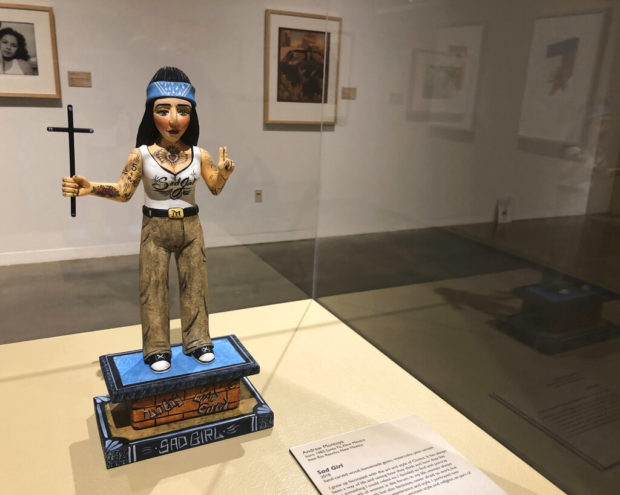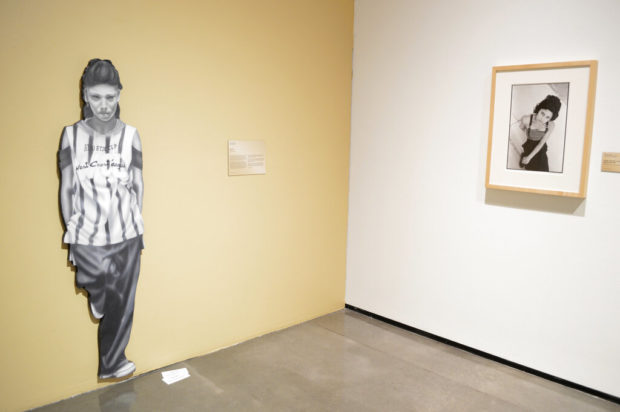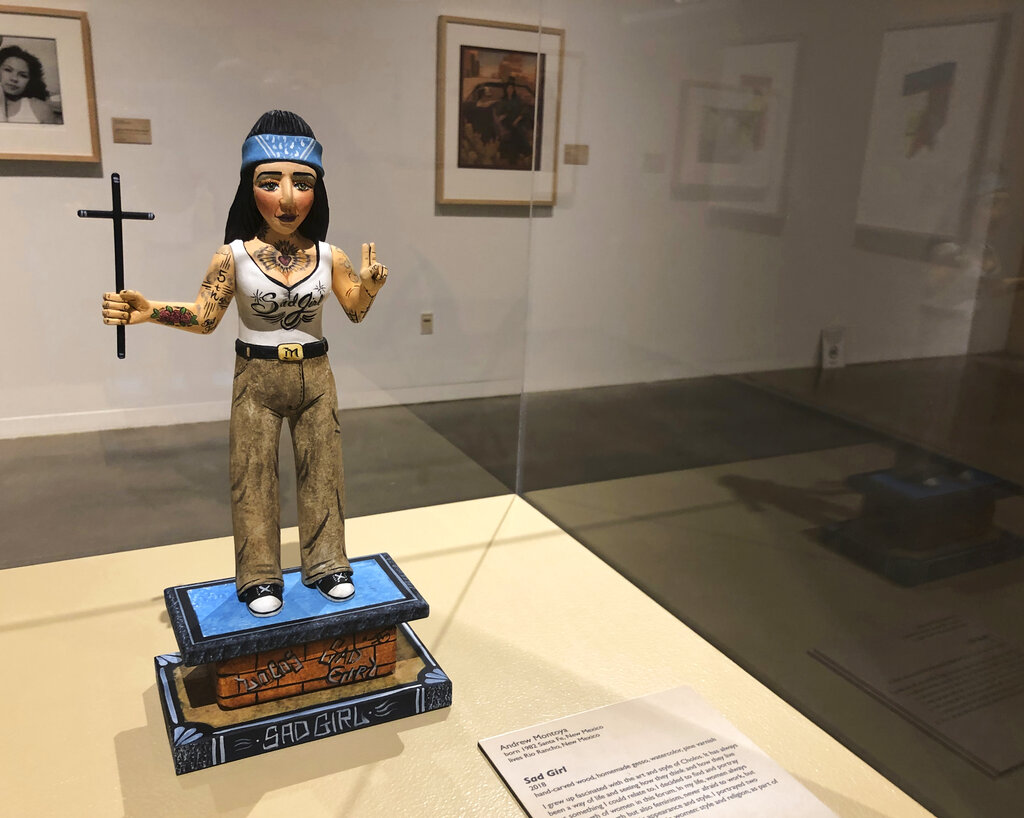
ALBUQUERQUE, New Mexico — A national Hispanic center is displaying a unique art exhibit on the chola — the working class, Mexican-American urban female often associated with gangs.
The National Hispanic Cultural Center in Albuquerque opened the “Que Chola Exhibition” on Friday with pieces by artists from New Mexico, Arizona, California, Texas, and Colorado.
The displays feature the evolution of the chola from the World War II-era to the contemporary figure trying to survive in poor neighborhoods. Using paintings, photography and sculptures, the exhibit attempts to cover images of the chola as an urban warrior, a mentor, a mother and political figure.
Cholas, or homegirls, often refers to a particular Latina subculture in the U.S. characterized by a tough demeanor and distinctive style. They are identified by their clothing ranging from flannel shirts and khaki pants to their dark eye makeup and indigenous-theme tattoos.
The image of the chola gained popularity in the late 1980s and early 1990s with movies like “Colors” and “Mi Vida Loca” (My Crazy Life).
In recent years, scholars have countered that the chola represents more than just gang activity. Latina scholars have argued that the chola’s image is a commentary of poverty in urban U.S. cities and symbolized a working-class Latina seeking to battle sexism.
Some Latina academics have playfully said on social media that “you can’t spell scholar without the word ‘CHOLA’.
Curator Jadira Gurule said she agreed that the chola is more than a so-called dangerous female gang member linked to criminal activity. For many Latinas, Gurule said the chola also represents strength and perseverance.
“Many within our communities either were, or admired and wanted to emulate, the chola growing up,” Gurule said. “She also represents real people with real experiences. The chola is a persona developed in response to racism and sexism. To reduce her to a gang member is shallow.”

Pola Lopez, a Las Vegas, New Mexico, born artist who now lives in Los Angeles, said she was excited when she was asked to participate in the exhibit. “The chola…you can’t mess with her,” said Lopez. “She’s beautiful and represents us in many ways.”
Her painting, “Coatlicue and Chola,” features a homegirl leaning against a statue of an Aztec goddess.
Nanibah Chacon, a Navajo and Hispanic artist from Arizona, said she wanted to create an image of a chola if she had been represented in midcentury advertisements. Her painting, “Xicana Classic,” depicts a chola from the 1970s sitting on a red circle and smiling with confidence.
The exhibit, which runs until Aug. 4, is the latest attempt to create a new image around the chola and expand her meaning.
The Los Angeles-based gang intervention group Homeboy Industries, for example, sells clothing designed by former cholas and runs Homegirl Cafe — a restaurant with food prepared by former gang members gaining new skills. The hip cafe is an offshoot of social enterprises founded by Jesuit priest Greg Boyle.
And Art Laboe, a 93-year-old DJ based in Palm Springs, California, allows cholas every Sunday on his syndicated oldies show “The Art Laboe Connection Show” to call in and give dedications to their loved ones serving time in prison. Scholars and activists say the radio show helps humanize cholas since it allows listeners to hear cholas express emotions of love and pain. MKH
RELATED STORIES:














































